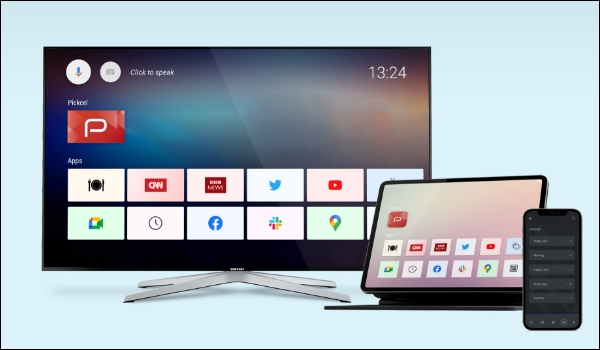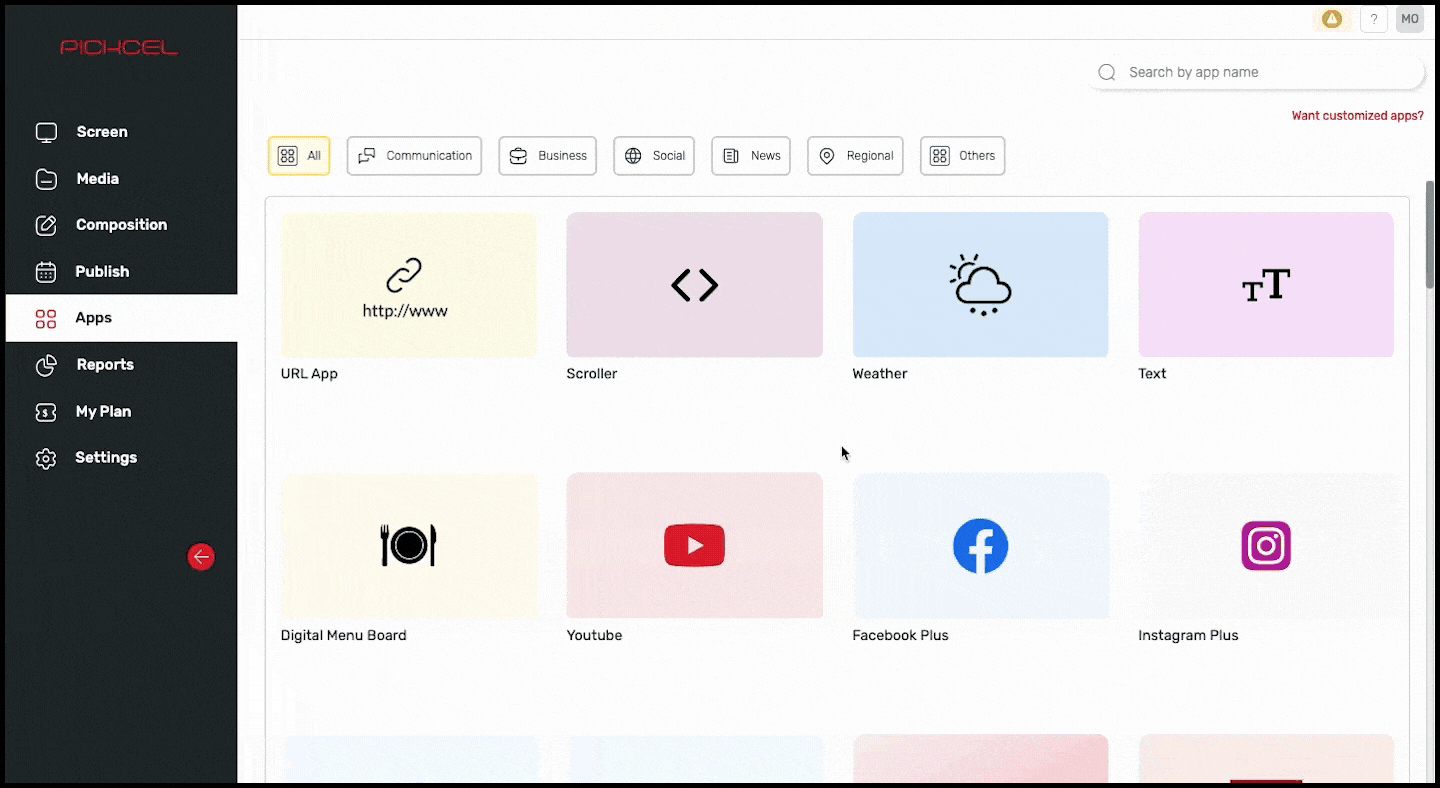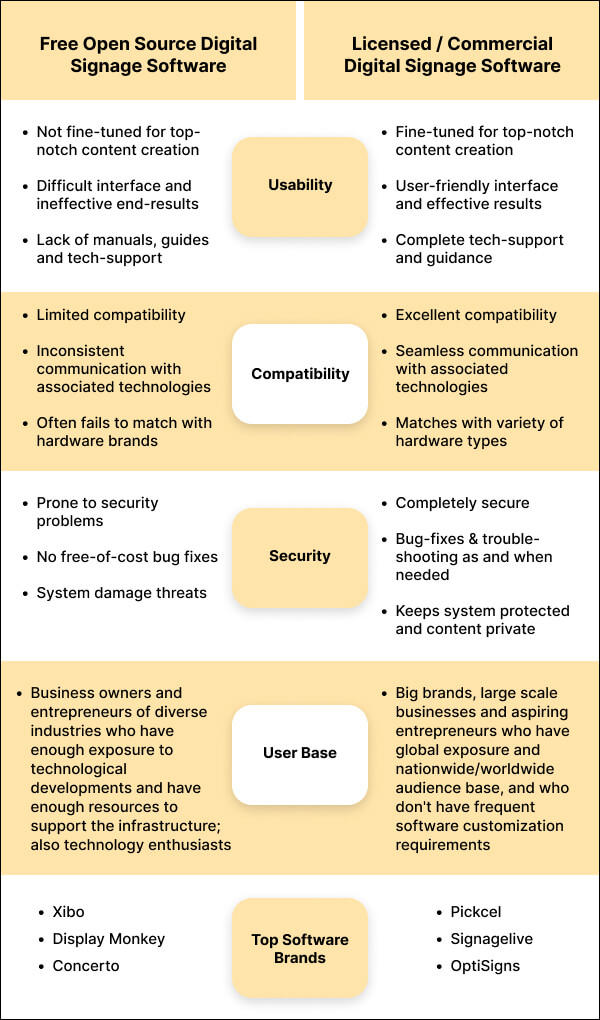
Dec 22 2022
5 min read


May
When you’ve learned about the immense benefits of digital signage, it’s hard to restrain from implementing it for your business.
Therefore, you’ve finally decided to change your approach to communicating with your audience and opt for digital signage solutions. Congrats! But wait, when you looked at the estimated budget, did you take a step back to reconsider?
Cutting short the budget on the software seems a good decision compared to the paid subscriptions of licensed software. But it only seems so. The real scenario is not exactly the way you imagine it.
We’ll explain it further in the blog. To start with, let’s get to know open-source digital signage a little more than its ‘free’ tag.
The term ‘open source’ refers to the software code being open to everyone. The ‘code’ is the language developers use to command the software its functions. This is known as the ‘source code.’
Most of the applications or software we use have either a ‘closed source’ or an ‘open source.’ Not everyone has access to closed source software (CSS) except the owners. The users pay only to use the software; they cannot alter it.
Open-source software is quite the opposite.
The source code, in this case, is kept available online to the public through software development platforms. So, any developer can read the code and study it for further knowledge. Most importantly, they can improve it by downloading and reviewing the code.
When you use open source code to build signage management software, that is called open-source digital signage.
For a digital signage system user (a company or a business owner), open-source software equates to ‘free software.’
The fact is that open-source digital signage software can be both free and paid. So don’t just randomly decide on any reputed open-source software without verifying whether it’s free or paid.
You have surely come across Raspberry Pi, the very popular device that uses open-source software? If you consider this one, let me tell you that it is not entirely free.
Setting up your DIY digital signage with Raspberry Pi open-source software is quite a daunting task, let alone the cost and effort you’ll spend on buying all the devices to get started in first place.
In fact, any software you start using will incur some expenses sooner or later. And surprisingly, these expenses are significantly higher when you use free open source digital signage software.
Even if you choose totally free open source digital signage software (with zero subscription for life), it will cost you more than you can even imagine. Let’s see how.
The free digital signage software compels you to compromise on all aspects of the signage content, from creative tools to migration options. A poorly designed interface makes the open-source digital signage software more of a burden than a solution.
An open-source digital signage solution comes hand-in-hand with the overhead costs for server hardware, data center costs, internet expenses, and server maintenance costs. You can’t but consider all of these to keep an open-source software running. So, it’s not really light on the pocket.
Why would you choose to be a spendthrift on business matters when there’s an economical alternative? If you opt for a cloud-based, licensed digital signage solution, the subscription cost will cover all those expenses, including hosting and maintenance charges.
Moreover, a free, open-source, but ineffective digital signage content management system will create a backlog for your IT team. And in the process, your organization drains out time, energy, and resources, costing you way too much.
You also must take note of the fact that digital signage solutions are not just a financial investment. It’s an investment of time, toil, and wit that go into educating your employees about the new system. Most importantly, you invest your team’s creativity in it to come up with impactful content.
Therefore, be wise and think twice when you decide to opt for free open-source digital signage software and think you’ve got a great deal!
A straightforward solution is commercial, licensed digital signage software.
Let’s face it. You will be spending a lot some way or the other. (Hope you’ve gathered that by now from the discussion we’ve had so far!) Then why put it in for a half-baked software? Why would you invest in a solution that’ll soon become a problem itself?
Choose licensed digital sign software and level up your marketing game with jazzy content without any cyber-security threats.
Organizations that use even the best open-source, unlicensed digital signage software face more malware than licensed software. Why? Because cybercrime masters pre-install the malware or embed it into the software to gain unauthorized access to your business information.
With licensed software, you get rid of all these hazards. Moreover, you can save the money you would otherwise have to spend on fixing the infected devices. You save money, time, and resources when you opt for licensed digital signage software.
More benefits await you in the section where we compare open source and licensed commercial digital signage solutions.

When opting for licensed software, it is best to go for a reputed digital signage software brand that has a demonstrated history of offering reliable services. Before buying, you must fully utilize the software trial that your vendor offers.
You don’t necessarily have to choose a software that is pricey and high-end with loads of complicated, extravagant features. Your ideal application should be one that is both usable and customizable.
Another important factor to consider while choosing your signage CMS is to ensure that the licensed software is compatible with the hardware component. Many businesses choose to go with an Android digital signage system and, therefore, it is popularly supported by most of the software vendors. However, if you are using less conventional operating systems like Raspberry Pi OS, Linux, or Chrome OS, ensuring the software compatibility becomes crucial.
Pickcel digital signage software comes in handy when looking for a simple yet powerful tool for creating, managing, and publishing your digital signage content.
It is a feature-rich, solution-packed digital signage software that offers excellent apps and widgets to help you create useful, appealing content and keep your digital signage up-to-date.
Let’s get a clearer picture of what major benefits you can’t generally get from open source digital signage software but from paid licensed software.
Malware in open-source software can infect your whole system and cost you too much time and money to restore the entire structure. Licensed closed source software has proprietary restrictions; hence, no one can copy or alter the software code. So, there are hardly any chances that malware will be embedded in it intentionally to gain access to the business confidentiality.
When you choose a licensed commercial digital signage solution, you choose the security of your privacy.
Commercial software vendors might take some time to resolve bug issues. But, they are certain to come up with a long-term solution, unlike open source. As it is a community-based platform, they take time to decide on a proper solution and often fail to offer a perfect solution.
The worst part is that the program developments and modifications happen so rapidly that another new issue has occurred by the time you fix the earlier bug. Even another version of the software may come out by the time you deal with the problems of the older version.
You must choose software that’s compatible with all other devices and technology running in your organization. You can’t always afford to build a whole new facility to make the software fit in!
Paid digital signage software that comes with monthly/yearly contracts works best because it is usually compatible with all sorts of modern devices and telecommunications.
Pickcel's is a highly compatible digital signage solution that functions amicably with all popular media players, such as Android, Windows, Linux, Raspberry Pi, and more.
You don’t want your employees to go crazy over the functionalities of the new software, do you? Hence, going for a straightforward tool with an easy yet interesting user interface is a smart choice. Contract-based paid commercial software makes it comfortable and convenient even for a layman to maneuver through the UI and create attractive content.

For open-source software, the tech support is usually community-based. So, what happens when you are in the middle of a technological failure? There is more than one opinion to come to your rescue, which can complicate the situation further instead of solving it.
You can be misguided by amateurish opinions and get dragged into deeper trouble. And even if an authentic solution comes, it might take too long to reach you due to community protocols. The result is, your business is compromised, work delayed and productivity hampered.
For commercial software, getting potential technical support is easy. You can simply reach out to the support team via email, chatbots, or phone calls. Many of these vendors have 24/7 support staff.
It is difficult to create unique and highly polished content with the limited features of a free digital signage tool. And to gain access to the advanced tool, if you have to pay at last, what’s the use of it being free?
Proprietory software is usually a one-time investment. Once you pay, you benefit from advanced features and programs developed by IT professionals. Modern, licensed digital signage software like Pickcel comes with a wide range of apps and widgets, such as weather app, world clock, local news feeds, countdown timer, digital menu board, stock market updates, and many more.
It makes signage content creation more fun than hard work. It offers amazing features that help with high-quality content composition and automation. Many licensed digital signage software have in-built or integrated Integration graphic design tools like Canva that further reduce your media design costs.
The ultimate result is the most important thing for any content creation tool. With free open-source and limited widgets, you can’t come up with great content. Therefore, fulfilling your marketing objectives with poorly created visuals isn’t quite possible. That’s why opting for licensed software seems a better and wiser decision.
If you are in a business where you need to meet changing consumer needs frequently, you’ll have to choose open source. Open-source software enables you to customize software code, contributing to the agility and efficacy of work progress.
When you have heavy customization requirements or an urgent need to extend, modify or add features to the software, you can take advantage of open-source digital signage.
A recent survey has revealed that 62% of the respondent companies try to avoid long-term contracts with software vendors. So, they keep away from it and choose open-source instead while enjoying the other benefits that come along.
If consumer needs or development plans change overnight, it’s quite a task to quickly progress with contract-based closed-source software.
Open-source software has no proprietary restrictions. If you have enough technical resources and expertise within your company to manage both the open-source digital signage software and the infrastructure for the same, you can easily opt for it. You can tweak the software for your convenience and modify it as per your marketing needs.
Also, if you are willing to crowd-source solutions for bug fixes or development plans, open-source software is the choice for you. The open-source community keeps the members accountable for the contributions they make.
Of course, saving capital and operational costs or other overhead costs can be one of the compelling reasons to choose free open-source digital signage software.
It will not be accurate to claim that open-source is the only solution when you need customized software. Licensed digital signage vendors like Pickcel also offer custom solutions to deliver robust, tailor-made software for any organization. Check out our customization & integration page.

We hope this blog has helped you get a fair idea about the disadvantages of free, open-source digital signage solutions against only a handful of conditional benefits. Also, the scenarios where open-source seems the only resort has also been discussed. Alongside, we have presented a clear picture of licensed commercial software as well. You have to pay for them, but the return on investment is fairly high.
So, you can easily compare and choose between paid and free open source digital signage software based on your long-term business objectives.
Whatever your decision may be, always choose a compatible, scalable, low-maintenance, technical team-supported software for your digital signage solution.
Take complete control of what you show on your digital signage & how you show it.
Start Free Trial Schedule My Demo
Dec 22 2022
5 min read

Dec 1 2022
10 min read

Nov 30 2022
9 min read

Nov 23 2022
6 min read